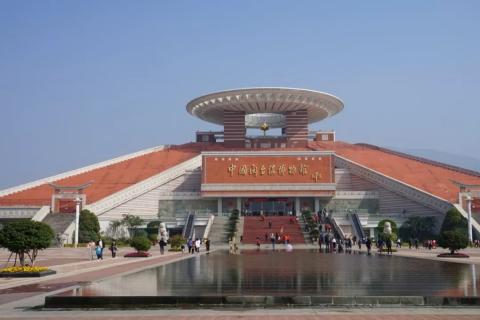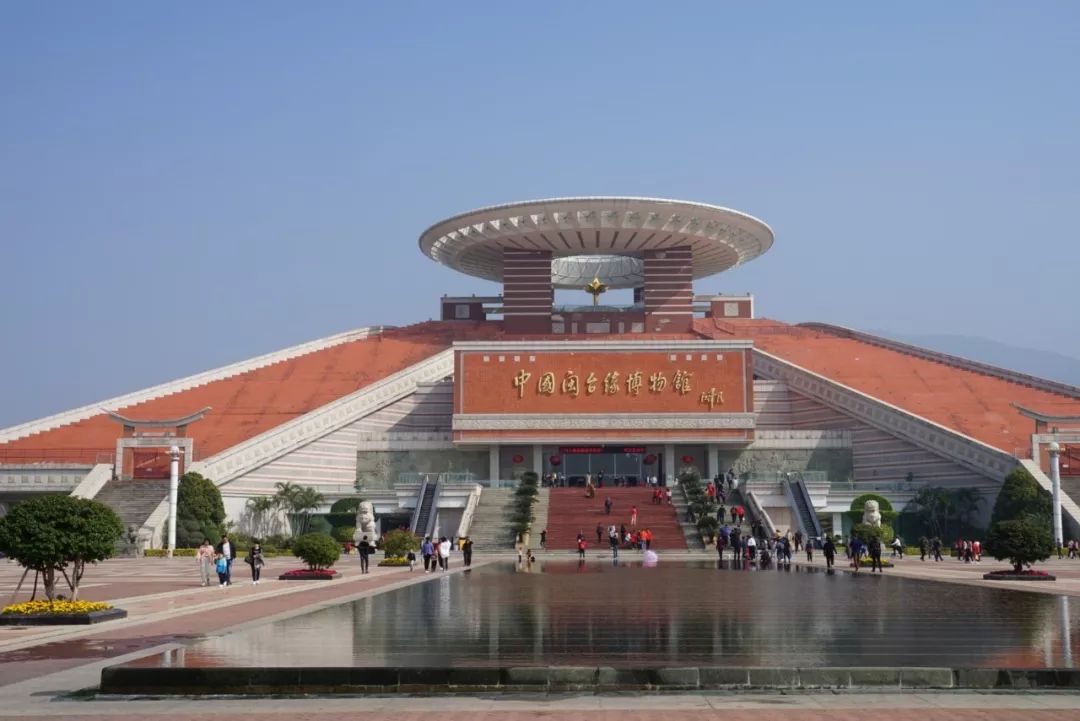
I traveled to Fujian during the Spring Festival. In order to have an in-depth experience, I only chose Xiamen and Quanzhou to experience the different cultures of southern Fujian.
Southern Fujian and Taiwan
The relationship between southern Fujian, Central China and Taiwan is closer than people think. These elements can be seen everywhere on the streets of Xiamen and Quanzhou, and we have a more systematic and in-depth understanding of them at the Fujian-Taiwan Marriage Museum and Quanzhou Museum.
The culture of Southern Fujian (centered in Quanzhou, Zhangzhou, and Xiamen) was developed from the immigrants from the Central Plains since the Wei and Jin Dynasties (the eight major surnames: Zhan, Qiu, He, Hu, Chen, Lin, Huang, and Zheng), plus the elements of the original inhabitants, the Minyue people. The Jinjiang River Basin, where the first immigrants came, was named after the "Jin" of the Western Jin Dynasty. There is a Luoyang Bridge in Quanzhou City.
More than 80% of Taiwan’s population are immigrants from southern Fujian, and 10% are Hakkas, who basically moved their hometowns in southern Fujian to Taiwan.
The museum in Quanzhou has a detailed introduction to southern Fujian culture. The Fujian-Taiwan Marriage Museum and the Quanzhou Museum are right next to each other, and they are both worth visiting.

Taiwan and southern Fujian have very close relations

Although I don’t understand Hokkien, I feel that the pronunciation of Taiwan’s Hokkien is closer to that of Quanzhou.

religious culture
Some of the temples built by the government in Quanzhou in the past were very large and extremely large, which shows the prosperity at that time. During the Song and Yuan Dynasties, this was the largest port in the East, as evidenced by the unearthed thousand-year-old ships.
Southern Fujian has a deep connection with Master Hongyi. Master Hongyi loved this place and preached Buddhism for fourteen years, and finally passed away in Wenling Sanatorium in Quanzhou. The Kaiyuan Ancient Temple built in the Tang Dynasty was the residence of Master Hongyi, and Chengtian Temple was the place where Master Hongyi often gave lectures. A major feature of southern Fujian is that there are many temples. There is a Guanyin Temple next to the inn where we stayed in Xiamen. The distinctive feature of the temples here is that they are very close to the people. There are no hundreds or thousands of incense sticks (you can pick up incense yourself at no charge), and there are no messy charging items. They look more like a part of people's lives and have been integrated into them. into the daily lives of the public.

There are many volunteers in each temple who will explain various rules to tourists, distribute souvenirs, guide the way, etc. I don’t know if it’s because of this or because of the Spring Festival, but I haven’t seen anyone doing square dancing in Xiamen and Quanzhou in the past ten days.
Each temple has a history, and it is easy to encounter one that is more than 1,000 years old.
Even such an inconspicuous little temple on the roadside is hundreds of years old:


Passing by Jianshan Temple in Xiapu, a temple from the Tang Dynasty


Kaiyuan Temple in Quanzhou, Tang Dynasty

The famous twin towers of Kaiyuan Temple are said to have survived an eight-magnitude earthquake.

Quanzhou Chengtian Temple is very simple

The Buddhist story murals in the temple are also worth savoring:


In Quanzhou, we often encounter scenes with the word "不二", which is probably also influenced by Buddhism.

Various religions coexist harmoniously

This seems to be the only one that charges a fee (not expensive, 3 yuan), but I didn’t get in:

The most lively one is Guandi Temple, which is very popular:


The Chenghuang Temple is very down-to-earth, and the old man inside is very enthusiastic. He will invite you to tea and introduce the history:

This is a bit too much and is superstitious:

Hokkien, Nanyin


There happened to be a Nanyin performance in Quanzhou. The one-hour performance showcased music performances, arias and operas. According to the museum's explanation, these are ancient Chinese pronunciations and ancient music. The pronunciation is basically incomprehensible. Although there are subtitles, I don’t know whether it is a rare word or a direct transliteration, and I can’t understand it. However, the singing style has the feeling of singing three sighs, and the charm is good. The arrangement is similar to Fujian food, and the decoration Less, simpler. The performers in Nanyin are all women, and the men only play music, which is the opposite of Peking Opera. Imagine what it would be like to pair Liu Yong's lyrics with such a piece of music from the Song Dynasty.
Can you understand what this means:



The performer on the left is a female character, and the one on the right is a male character. Note their different gestures:


The young actors also came on stage to perform, and they were followed by:


family mark
Many people from southern Fujian have migrated here since the Jin Dynasty. Families that can be traced back will write corresponding words on their doors. This is similar to the Dali family's "Innocent Family", "Qinhe Family Sound" and "Hundred Ninja Family Sound". The words "Qinglian legacy" on the screen wall indicate that the family surnames have similar meanings.



There are many differences between the culture of southern Fujian and other places. I feel that people are relatively calm and treat others warmly but not deliberately. It is a suitable place for leisure.
